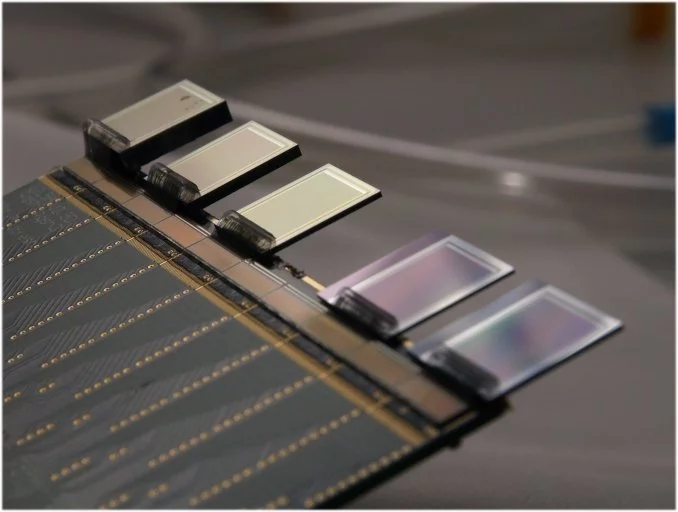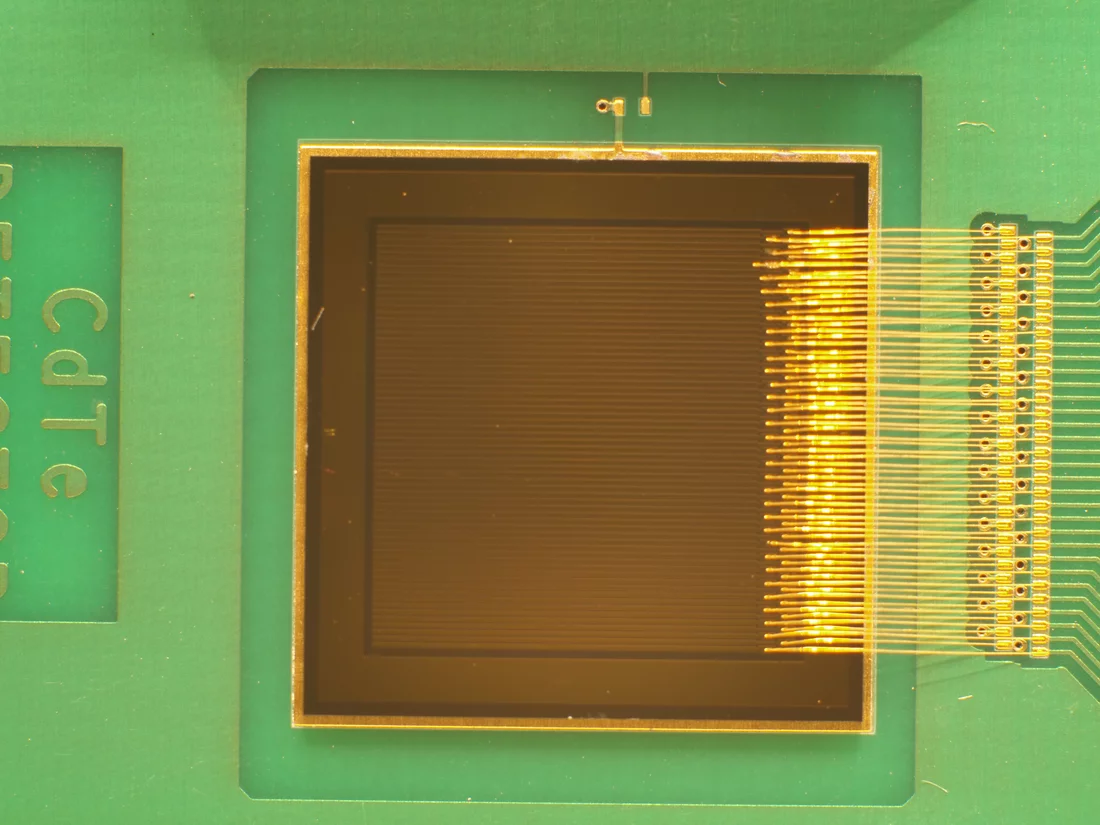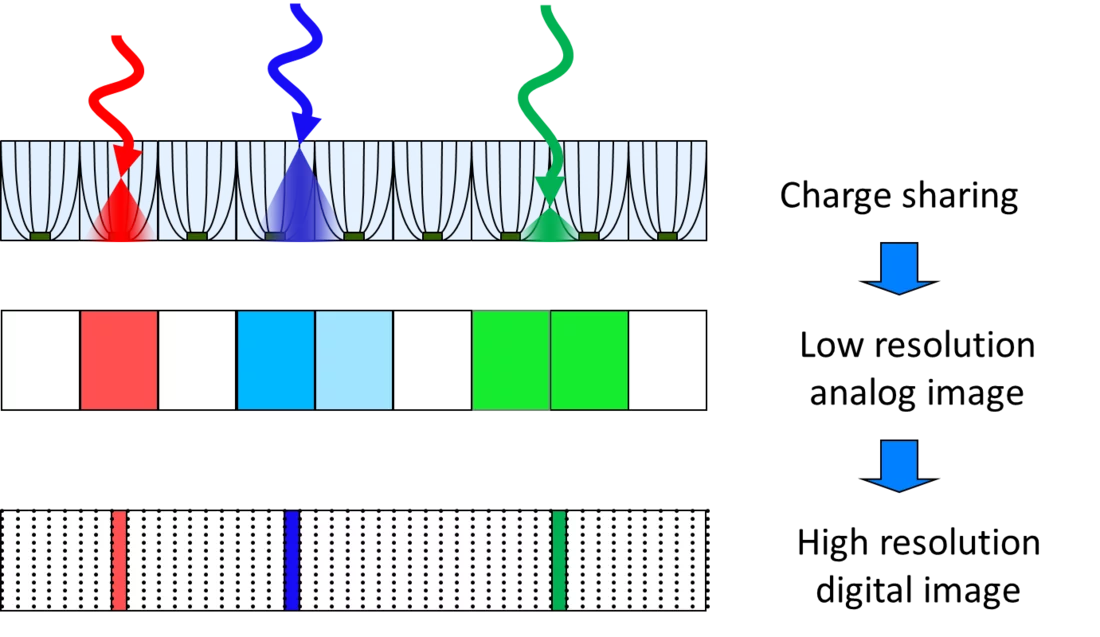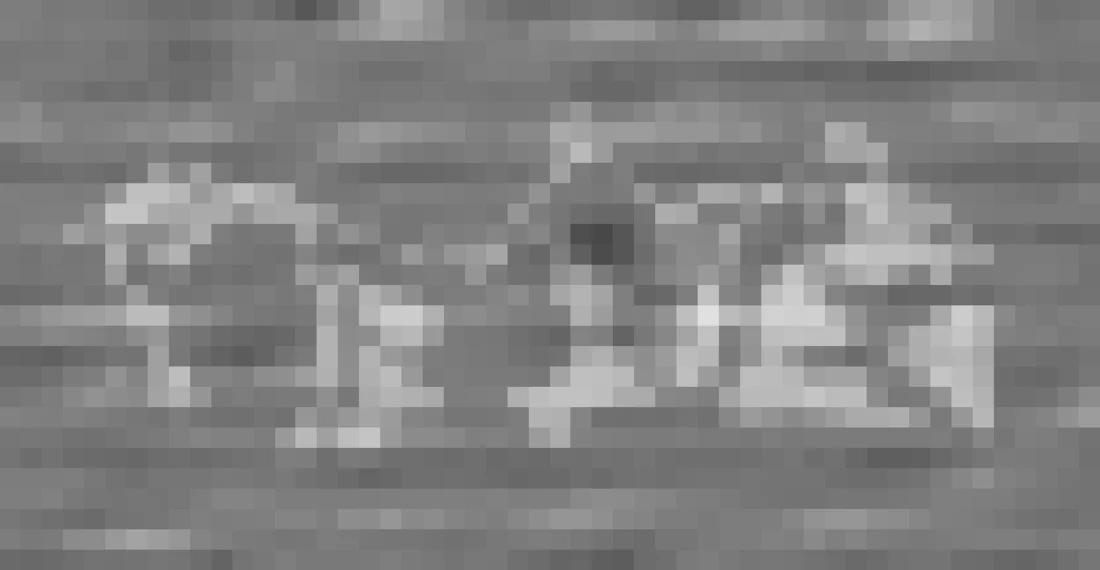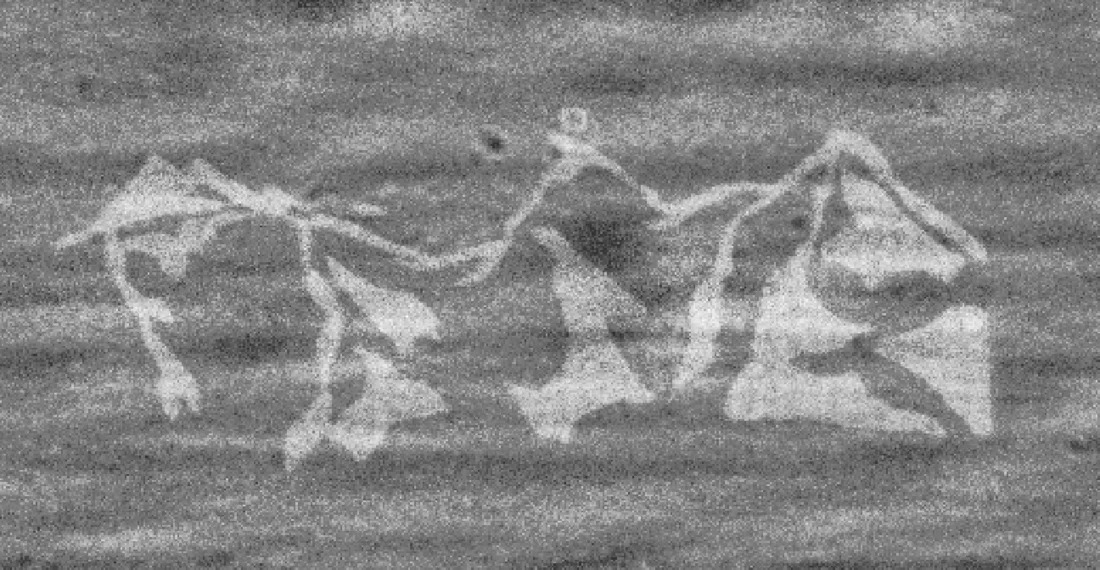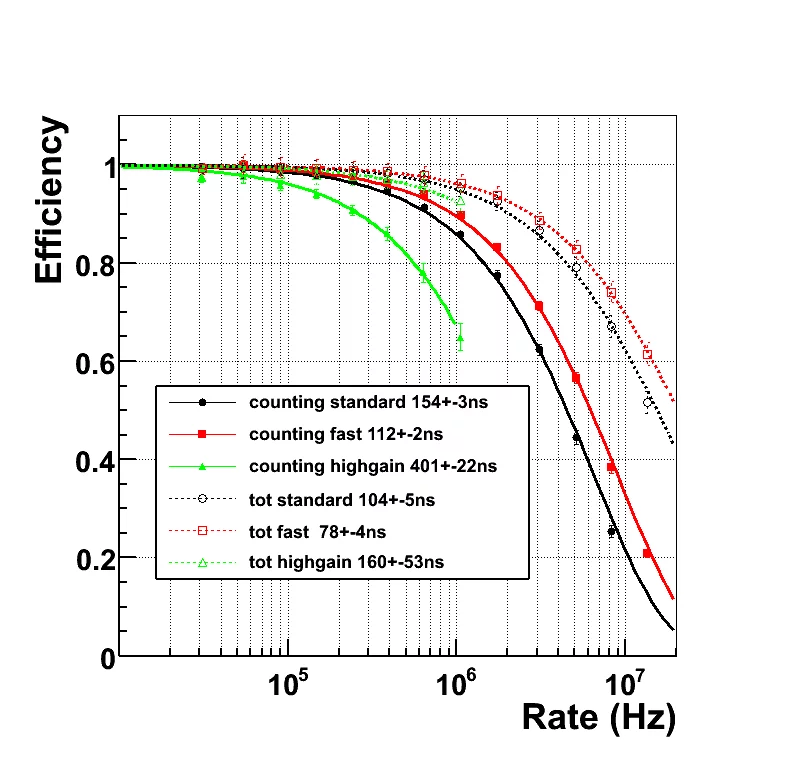We are actively researching and developing new technologies to expand the applications of our detectors by optimizing both the sensor designs and readout techniques.
Optimization of the sensor efficiency
Our detectors typically operate within the 5-30 keV energy range, where standard silicon sensors with thicknesses between 0.3 mm and 1 mm provide acceptable absorption efficiency. To improve performance for hard X-rays, silicon sensors up to 2 mm thick have been tested, focusing on spatial resolution and signal-to-noise ratio.
For higher energies, achieving sufficient absorption efficiency requires either thicker silicon or high-Z sensor materials. In collaboration with other institutions, we are conducting test measurements to develop strip and pixel sensors using materials such as CdTe, CdZnTe, and GaAs.
At lower energies, below 2 keV, photon absorption occurs primarily at the sensor surface. This makes optimization of the sensor’s entrance window, or backplane, crucial for efficient charge collection. To address this, we are working closely with silicon foundries to enhance the charge collection efficiency at the entrance window.
| Personne | Position | Phone Nr. | Courriel |
|---|---|---|---|
| Dr. Dominic Greiffenberg | Scientist
|
||
| Dr. Jiaguo Zhang | Scientist
|
Spatial resolution enhancement
When X-rays interact with silicon sensors, the resulting charge diffuses as it drifts toward the collecting electrodes. If the photon is absorbed between two electronic channels, its signal is divided between them, a phenomenon known as charge sharing. While this can be a disadvantage for single-photon counting detectors, charge-sharing can be leveraged by charge-integrating detectors to enhance spatial resolution through inter-channel interpolation.
This approach has been tested using detectors like GOTTHARD and MOENCH. The hit position of single photons can be determined by exploiting the fixed correlation between the hit location and the ratio of charge collected by neighboring channels. By calibrating this relationship with a uniform photon field, the positions of incoming photons can be reconstructed with (sub-)micron precision.
| Personne | Position | Phone Nr. | Courriel |
|---|---|---|---|
| Dr. Anna Bergamaschi | Group Leader Detector Science and Characterization
|
||
| Dr. Aldo Mozzanica | Detector Scientist
|
Count rate improvement
The main limitation of modern single-photon counting (SPC) systems emerges under high photon flux conditions. When a second photon arrives before the previous one is registered, it is lost, reducing both detection efficiency and linearity. Although some corrections can be applied, this phenomenon imposes an upper limit on the count rate, lowering overall data throughput. Charge-integrating (CI) detectors are capable of handling higher fluxes, but they typically suffer from disadvantages such as limited dynamic range and single photon resolution, sensitivity to dark current, and increased background noise from sample fluorescence. The ideal detector would combine the low noise, wide dynamic range, and background suppression of an SPC detector with the high flux capacity of a CI device.
One approach to extending the count rate capability is to operate SPC devices in time-over-threshold (ToT) acquisition mode, which maintains their dynamic range while improving performance at high rates. This method estimates the energy deposited by a particle by measuring the time that the signal remains above a predefined threshold. By converting the signal pulse height into a digital value early in the front-end electronics, ToT acquisition simplifies the system compared to traditional analog detectors, which require serial readout through one or more ADCs.
Using ToT acquisition, the rate capability of MYTHEN can be extended by at least a factor of two. Further optimization is possible by adjusting the analog signal shaping. MYTHEN can operate in high-gain mode (low noise) with improved high-rate performance, even at low energies, allowing experiments to be conducted under high radiation flux without needing to attenuate the beam, as would be required in standard SPC mode.
Another method to extend the count rate is pileup tracking, achieved by using multiple comparator thresholds. In this technique, one threshold is set at 50% of the photon energy, while additional thresholds are set higher to detect piled-up photons at high rates. This method has been tested with MYTHEN II, where, combined with an ultra-fast shaping time of less than 30 ns, it enables count rates exceeding 25 MHz per strip with 80% efficiency using three counters.
| Personne | Position | Phone Nr. | Courriel |
|---|---|---|---|
| Dr. Anna Bergamaschi | Group Leader Detector Science and Characterization
|
Electron detection
Hybrid detectors are versatile and can be used to detect not only X-rays but also various types of ionizing particles. Applications such as Photoemission Electron Microscopy (PEEM) and electron microscopy benefit greatly from the large dynamic range, fast frame rates, and low noise levels of our detectors, making them ideal for high-performance imaging and analysis.
| Personne | Position | Phone Nr. | Courriel |
|---|---|---|---|
| Dr. Lars Erik Fröjd | Scientist
|
Low Gain Avalanche Diode sensors
Achieving single-photon resolution for energies below 1 keV is particularly challenging, as the charge generated by single photons approaches the electronic noise threshold of our readout electronics, making it difficult to discriminate signals.
Low Gain Avalanche Diode (LGAD) sensors, however, offer a promising solution by internally amplifying the signal. Proof-of-principle measurements using both single-photon counting and charge-integrating microstrip readouts have shown that LGADs can significantly extend single-photon resolution to lower energies. By applying a multiplication factor of around 7, we demonstrated that the MYTHEN single-photon counting microstrip detector's minimum detectable energy could be reduced by a factor of 5.
Building on these encouraging results, we are collaborating with silicon foundries to optimize this technology, originally developed for high-energy physics timing, for soft X-ray detection. Key areas of focus include enhancing sensor segmentation and improving quantum efficiency.
| Personne | Position | Phone Nr. | Courriel |
|---|---|---|---|
| Dr. Jiaguo Zhang | Scientist
|
||
| Dr. Anna Bergamaschi | Group Leader Detector Science and Characterization
|



